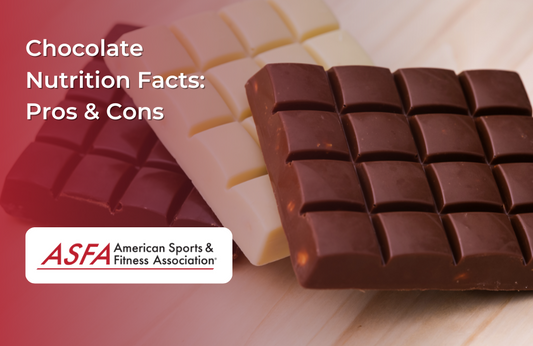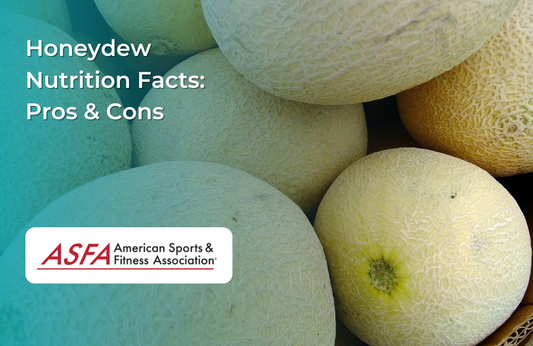Chickpea pasta is a gluten-free, high-protein alternative to traditional wheat pasta, offering more fiber and essential nutrients. It is a popular choice for those seeking a plant-based, nutrient-dense meal option. While it provides several health benefits, its carbohydrate content and texture differences should be considered.
Chickpea Pasta Nutrition Facts Pros Cons: Per One Cup, Cooked - About 140g
-
Calories: 190
-
Protein: 14g
-
Carbohydrates: 32g
-
Fiber: 8g
-
Sugar: 3g
-
Fat: 3g
-
Iron: 4mg (22% of Daily Value)
-
Magnesium: 50mg (12% of Daily Value)
-
Potassium: 480mg
Some chickpea pastas also include brown rice flour to enhance texture and flavor.
Overview of Chickpea Pasta
Chickpea pasta is a nutritious alternative to traditional pasta, crafted from chickpeas, a powerhouse of plant-based protein. Naturally gluten-free, it caters to those with celiac disease or gluten intolerance, as well as anyone seeking a healthier pasta option. The process involves blending chickpeas with water and shaping the mixture into familiar pasta forms. This results in a product rich in protein, fiber, and essential nutrients, making it an excellent addition to a balanced diet.
Definition and Ingredients
Chickpea pasta is a type of alternative pasta made from chickpeas, a powerhouse of plant-based protein that is naturally gluten-free. The primary ingredient in chickpea pasta is chickpea flour, which is made by grinding dried chickpeas into a fine powder. This flour is then mixed with water to form a dough, which is shaped into various pasta forms. Some varieties also include additional ingredients like brown rice flour or pea protein isolate to enhance texture and nutritional value. Compared to traditional pasta made from wheat flour, chickpea pasta offers several nutritional benefits, including higher protein and fiber content, making it a healthier choice for those looking to boost their intake of plant-based protein and essential nutrients.
Nutritional Comparison to Traditional Pasta
When compared to traditional pasta, chickpea pasta stands out with its impressive nutritional profile. It boasts a higher protein content, which is beneficial for muscle repair and satiety. Additionally, chickpea pasta has a lower glycemic index, helping to stabilize blood sugar levels more effectively than regular pasta. It’s also lower in calories and carbohydrates, making it a smart choice for those aiming to lose weight or manage their weight. The high fiber content further supports digestive health and helps maintain steady blood sugar levels.
Macronutrient Breakdown
Here’s a closer look at the macronutrient composition of chickpea pasta per serving:
-
Protein: 14 grams
-
Fiber: 8 grams
-
Carbohydrates: 32 grams
-
Fat: 3 grams
This breakdown highlights chickpea pasta’s balanced nutritional profile, making it a valuable addition to any diet.
Pros of Chickpea Pasta
High in Protein for Muscle and Satiety
-
Contains 14g of protein per serving, making it a great plant-based protein source
-
Helps support muscle repair and keeps you full longer
Rich in Fiber for Digestion and Blood Sugar Control
-
8g of fiber per serving promotes gut health and regular digestion
-
Helps slow carbohydrate absorption, preventing blood sugar spikes
Naturally Gluten-Free
-
Safe for those with celiac disease or gluten intolerance
-
A great alternative for wheat-sensitive individuals
Provides Essential Vitamins and Minerals
-
High in iron, magnesium, and potassium, supporting blood circulation, energy levels, and muscle function
-
More nutrient-dense than traditional wheat pasta
Supports Weight Management
-
High protein and fiber promote satiety and may help reduce overall calorie intake and target belly fat.
-
Chickpea pasta can be a valuable addition to one's weight loss journey due to its nutritional profile.
-
Fewer empty carbs compared to refined pasta
Chickpea pasta supports sustainable weight loss through its nutritional profile.
Cons of Chickpea Pasta
Higher in Carbohydrates
-
Contains 32g of carbs per serving, which may not fit very low-carb or keto diets
-
Should be consumed in moderation for individuals managing blood sugar levels
Different Texture and Taste
-
Firmer and slightly grainier texture compared to wheat pasta
-
Some people find it chewier or more dense than traditional pasta
May Cause Digestive Sensitivity
The high fiber content may lead to bloating or gas in some individuals
Drinking plenty of water can help reduce digestive discomfort
Chickpea pasta can be a more digestible way to eat beans for those who experience digestive issues with whole beans
Improper management of digestive sensitivity can lead to weight gain, as bloating and discomfort may affect eating habits and result in overeating.
More Expensive Than Regular Pasta
-
Typically costs more than traditional wheat pasta due to its high-protein content and production process
-
Some varieties may contain added ingredients, so checking labels is important
Tips for Incorporating Chickpea Pasta into Your Diet
-
Start with small portions: Given its high fiber content, it’s wise to begin with smaller servings of chickpea pasta to allow your digestive system to adjust.
-
Pair with healthy sauces: Opt for sauces that are low in added sugars and saturated fats to enhance the nutritional benefits of chickpea pasta.
-
Add protein sources: Complement chickpea pasta with protein-rich foods like lean meats, beans, or tofu to support muscle growth and repair.
-
Experiment with different recipes: Keep your meals exciting by trying various recipes and seasonings, preventing meal fatigue and ensuring a diverse diet.
Cooking and Preparation
Cooking chickpea pasta is quite similar to preparing traditional pasta, making it an easy swap in your favorite recipes. To cook chickpea pasta, simply bring a pot of water to a boil, add the pasta, and cook for 6-8 minutes or according to the package instructions. Once cooked, it’s recommended to rinse the pasta with cold water to remove excess starch and help it retain its texture. This step ensures that the pasta remains firm and doesn’t become mushy. Chickpea pasta pairs well with a variety of sauces and seasonings, such as tomato sauce, pesto, or a simple drizzle of olive oil. For a nutritious and delicious meal, consider using healthy fats and fresh herbs to enhance the flavor while keeping the calorie count low. This approach not only helps you consume fewer calories but also adds a burst of flavor and nutrition to your dish.
Meal Ideas and Recipes
Here are some tasty and nutritious meal ideas featuring chickpea pasta:
-
Chickpea Pasta with Tomato Sauce: Cook chickpea pasta according to package instructions, then top with a homemade tomato sauce made from fresh tomatoes, garlic, and olive oil.
-
Chickpea Pasta Salad: Prepare chickpea pasta, then mix with chopped vegetables such as cherry tomatoes, cucumbers, and bell peppers, and dress with a homemade vinaigrette.
-
Chickpea Pasta with Roasted Vegetables: Cook chickpea pasta, then combine with roasted vegetables like broccoli, Brussels sprouts, and sweet potatoes, finishing with a drizzle of olive oil.
These meal ideas not only highlight the versatility of chickpea pasta but also ensure you enjoy a variety of flavors and nutrients in your diet.
Conclusion
Chickpea pasta is a high-protein, fiber-rich alternative to traditional pasta, making it a great choice for weight management, digestion, and muscle support. It is gluten-free and packed with essential nutrients, but its higher carb content, texture differences, and potential digestive effects should be considered. Balancing portion sizes and pairing it with healthy fats and proteins ensures maximum nutritional benefits.
FAQs
Is chickpea pasta healthier than wheat pasta?
Yes, it contains more protein, fiber, and nutrients, making it a better option for most diets.
Can diabetics eat chickpea pasta?
Yes, but in moderation. It has a lower glycemic impact than white pasta but still contains carbohydrates.
Does chickpea pasta taste like regular pasta?
Not exactly. It has a firmer, slightly nuttier texture compared to traditional wheat pasta.
Can chickpea pasta cause bloating?
Yes, its high fiber content may cause bloating in some individuals, especially if consumed in large amounts.
How should I cook chickpea pasta?
Cook it slightly al dente and pair it with sauces or proteins for better texture and balanced nutrition.





